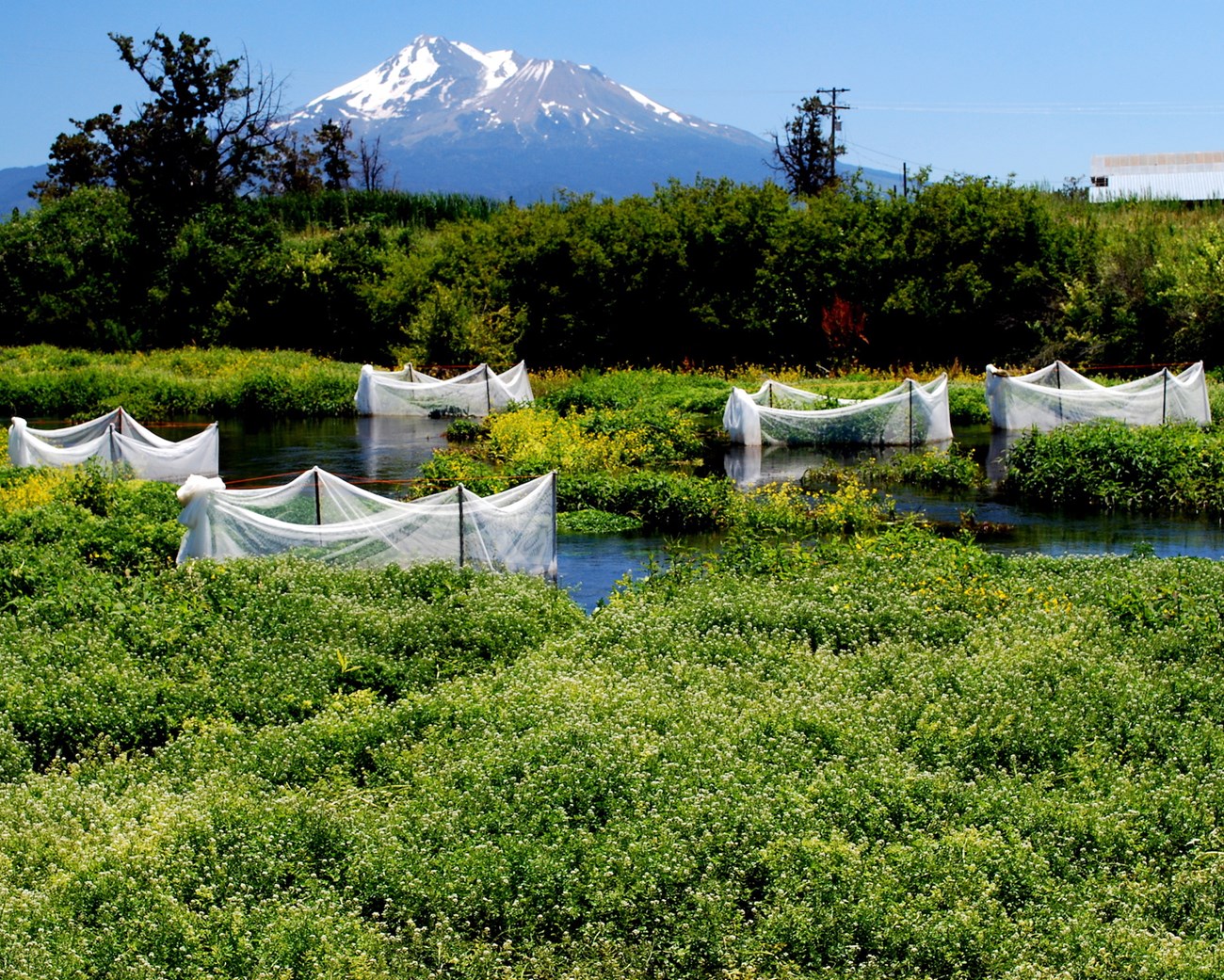Last updated: April 3, 2020
Article
Could Juvenile Coho Conquer Warmer Stream Temperatures?

Rob Lusardi / UC Davis
March 2020 - It was long ago established that elevated water temperatures are not great for juvenile coho salmon growth and survival. As a result, coho habitat restoration projects often focus on providing shade, deep pools, etc., to help maintain cool water temperatures. But climate change is making it increasingly difficult to ensure cool creeks for young coho. Thus, researchers at the University of California, Davis and NOAA wondered: are there other aspects of coho rearing habitat that, if optimal, might mitigate the impacts of warmer water temperatures? In their recently published study, they find that prey abundance is key. If they have plenty to eat, juvenile coho can maintain above-average growth rates in spite of warmer stream temperatures.
The study was experimental in nature. In 2013, the researchers constructed five enclosures along five different reaches (for a total of 25 enclosures) in the Klamath River watershed in northern California. They selected the reaches to represent a range of different water temperatures. They then distributed 150 juvenile Southern Oregon/Northern California Coast coho from a nearby hatchery among the enclosures, and monitored them closely from July until September. At the same time, they monitored a range of habitat factors in and around the enclosures, from water temperature, depth, and velocity, to aquatic plant cover and invertebrate density and biomass. They were surprised to find that, with enough invertebrates to eat, coho growth rates peaked at average water temperatures of 61.8 degrees F, and with remarkably high maximum weekly temperatures of 70 degrees F. Previous studies had identified the optimal stream temperatures for these fish as being in the mid fifties (F). These findings imply that protecting cool water habitat may not be the only way to provide valuable refuge to stressed populations of juvenile coho. Focusing on conserving warmer habitats with abundant prey may help as well.
For more information
- Check out a summary article on the study in the UC Davis Press Room
- Explore the full study published in the Canadian Journal of Fisheries and Aquatic Sciences
